Residential Garage Door Track Options

The track is one of the most important components of a garage door system. The track partially supports the door's weight and ensures smooth, unobstructed and steady movement whenever you open and close the garage door. Learn about the different types of garage door tracks and their specifications in this article.
Headroom refers to the space above the uppermost part of the garage door. The headroom distance is measured from that uppermost point to the nearest obstacles above the garage door. These obstacles may include lighting, piping, steel rods, support beams, vents or other obstacles. The headroom must be large enough to accommodate the door, track and supporting components, including:
- The curved track portion linking the vertical and horizontal track portions
- Extension or torsion springs that provide a counterbalance to the door's weight
- The garage door opener's motor
The sideroom of a garage door track is the available space between the garage walls or nearest obstruction and the vertical portion of the track. The sideroom measurements determine the size of torsion and extension springs your garage door track will need and the amount of space left for track brackets.
A garage door track's backroom is the depth of the garage, or the distance from the top of the garage door when it's opened to the garage's back wall.
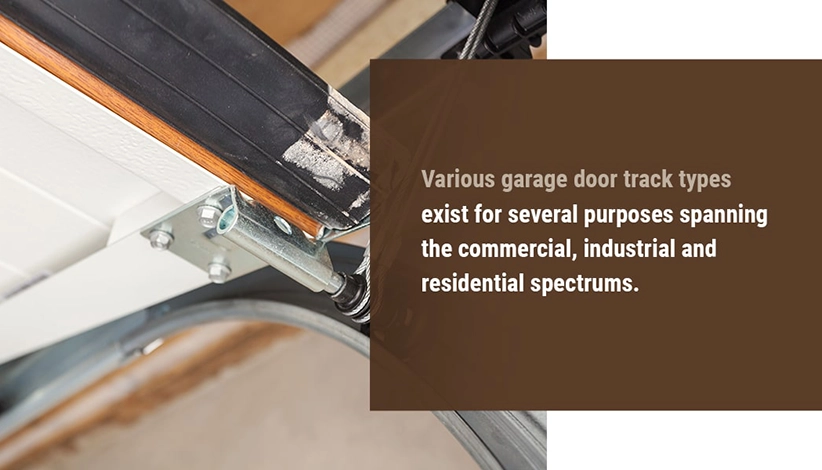
Various garage door track types exist for several purposes spanning the commercial, industrial and residential spectrums. Garage door tracks come in three different widths — 1, 2 and 3 inches. 1-inch garage door tracks are commonly seen on semi-trailer doors, while 2-inch tracks are more common in commercial and residential applications. You'll likely find 3-inch tracks among heavy, industrial applications.
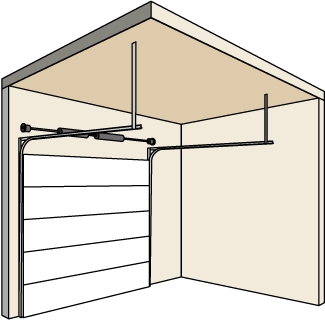
The standard radius is the most common type of garage door track. It's typically used for most residential applications. The specifications of the 2-inch wide standard radius track are as follows:
- Headroom: 12-inch radius = 12 inches required, 15-inch radius = 14.25 inches required
- Sideroom: 4.5 inches required
- Backroom: Door height plus 16 inches required
For the 3-inch wide standard radius track, the specifications are:
- Headroom: 16.5 inches required
- Sideroom: 5.5 inches required
- Backroom: Door height plus 25 inches required
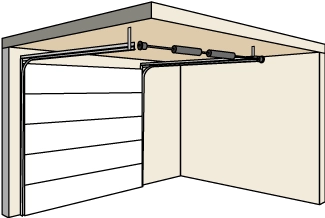
Another type of low headroom track uses a rear mount spring instead of a front mount. The rear mount is used when the space above the garage door is severely restricted for normal door operation. Here's the amount of space required for a 2-inch wide low headroom tracked with a rear mount spring:
- Headroom: 4.5 inches required
- Sideroom: 7.5 inches required
- Backroom: Door height plus 30 inches required
For the 3-inch wide standard radius track, the specifications are:
- Headroom: 8.5 inches required
- Sideroom: 9 inches required
- Backroom: Door height plus 32 inches required
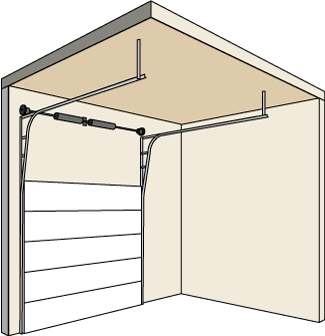
The high lift track is used when there is ample headroom — over 30 inches — and additional workspace clearance is required. Garage owners often use this type of garage door track to help the track avoid obstacles in the garage, such as an entry/pass door or other structural elements. The 2-inch track requires:
- Headroom: High lift plus 9.5 inches required
- Sideroom: 4.5 inches required
For the 3-inch wide standard radius track, the specifications are:
- Headroom: High lift plus 11 inches required
- Sideroom: 5.5 inches required
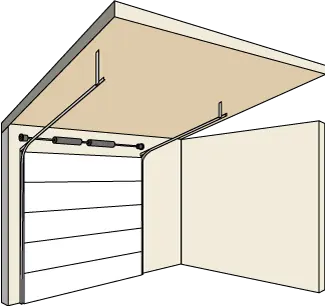
The follow roof pitch lift provides increased workspace for applications and garages with sloped ceilings. The 2-inch track with a 15-inch radius requires:
- Headroom: 14.25 inches required
- Sideroom: 4.5 inches required
- Backroom:Door height plus 16 inches required
The 3-inch track requires:
- Headroom: 16.5 inches required
- Sideroom: 5.5 inches required
- Backroom: Door height plus 25 inches required
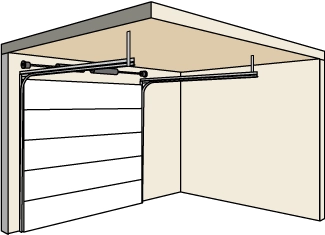
The low headroom track is used when headroom is limited for proper door operation. Sometimes referred to as a dual-track, this track contains a second horizontal track that moves the top section of the door. It also contains a spring that's either mounted at the front or rear of the track. Here are the specifications for a 2-inch wide low headroom track:
- Headroom: 9 inches required
- Sideroom: 4.5 inches required
- Backroom: Door height plus 23 inches required
The specifications for the 3-inch wide low headroom track are:
- Headroom: 14 inches required
- Sideroom: 6.5 inches required
- Backroom: Door height plus 25 inches required
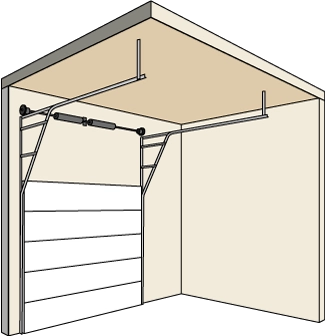
The 25 Degree track is used to avoid interference with handles or windows when opening the garage door. The 2-inch 25 Degree track requires:
- Headroom: High lift plus 9.5 inches required
- Sideroom: 4.5 inches
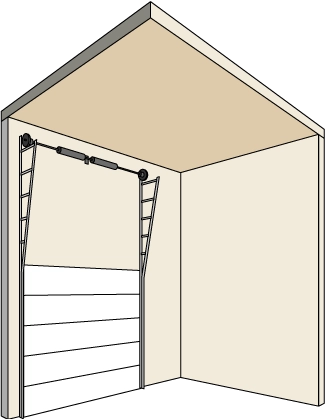
The vertical lift is used when there is at least the door height plus 12 inches of headroom clearance. This option is helpful when more vertical workspace is needed in the garage. The 2-inch track requires:
- Headroom: Door height plus 12 inches required
- Sideroom: 4.5 inches required
- Backroom: 23 inches required
The 3-inch track requires:
- Headroom: Door height plus 12 inches
- Sideroom: 5.5 inches required
- Backroom: 23 inches required
The dimensions listed for each garage door track type cover the most typical applications. These applications involve doors up to 8 feet in height, using standard torsion springs with the vertical portion of the track resting on the floor. Some door and spring configurations may require additional headroom, as different components may be needed to counterbalance the door.
Are you looking for replacement, installation or service for your garage door track? Use our Where to Buy locator to find a Clopay dealer near you, or view our Service & Support section for additional information.

